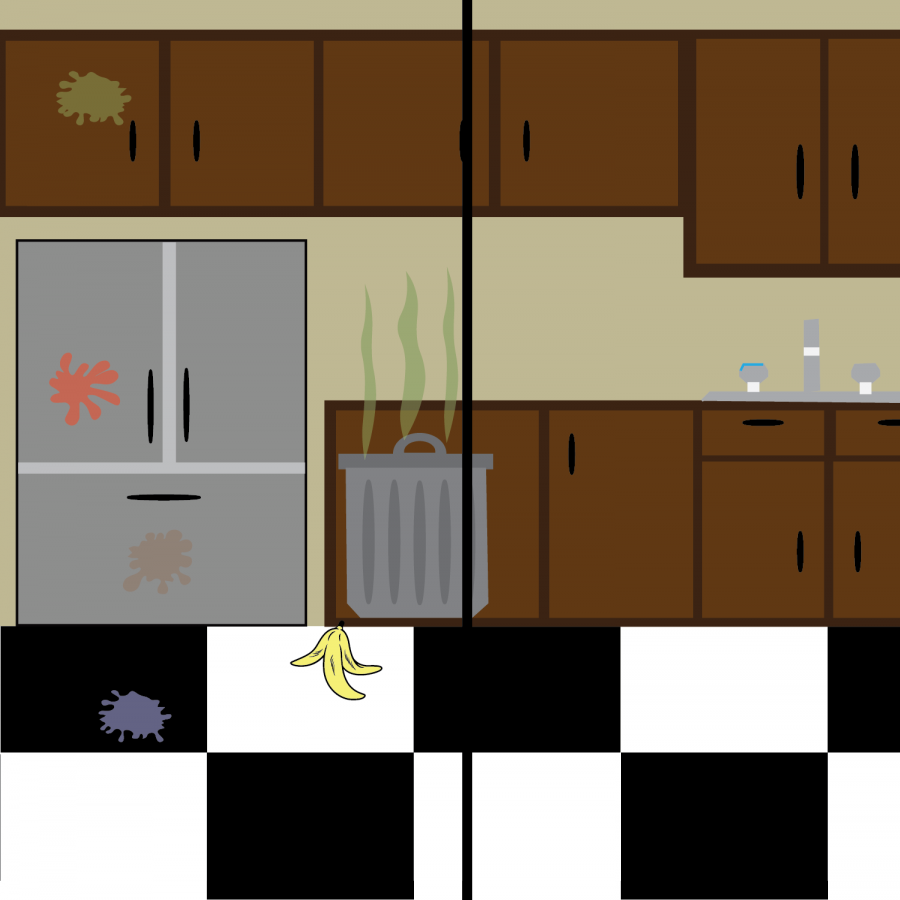A sweeping success: cleaning your kitchen
Sep 24, 2018
One day, you arrive and the kitchen is spotless. It sparkles and invites you in for another ill-advised yet cheerful attempt at cooking. The next day, the fruits of your labor are there to be seen: a dish here, an extra bowl there. Then, things get worse.
Time passes, and one day you walk into the kitchen and realize, with a second of breathless horror, you don’t know where the countertop ends and where the mess begins. It has become a freakish miasma of messiness, and you don’t know where to start, let alone finish.
But fear not. There are just a few rules to cleaning a kitchen well, and following them will help you keep your house in order, even facing a week’s worth of mess.
Rule No. 1: Clear the helpful parts first
Every kitchen has a part that helps clean the rest. Usually that’s the sink or the dishwasher, but this can sometimes be a countertop or even a disheveled cupboard space. Whatever space you need to get the process of cleaning moving, tackle it first.
If the dishes are piled up in the sink and the dishwasher is still full from last week, then empty the dishwasher and the sink. If the countertop is where you normally organize the kitchen and it’s full of clutter, take your first few minutes to clear it off so you can get cracking on the larger picture; likewise for overstuffed cupboards.
Get The Daily Illini in your inbox!
Rule No. 2: Different surfaces, different rules
If you’re lucky, then every surface in your kitchen is perfectly optimized for cleaning efficiency. However, if you live in the real world, you might face some disadvantages, depending on what you’re cleaning.
If you have a tiled floor with uneven grout, for example, you might not have much luck using a broom to clean. The dirt will get caught in the cracks and you’ll have just made more work for yourself. If you’ve got a nice, flat, hardwood floor, then you can clean in whichever way is most convenient, but if you have a tiled floor or an especially uneven set of boards, then it might be easiest to just use a mop.
Be sure to consider this before you buy your cleaning supplies.
Likewise, countertops pose different strengths and weaknesses. Having heavily textured, dark countertops will hide spills and stains much better than a flat, lighter color, but these concealed flaws come at a price.
When cleaning a lighter, non-textured surface, you can just go where there is a stain and clean it: problem solved. When cleaning a textured countertop, you need to make sure that every bit of the surface is cleaned, because you can’t count on your eyes to tell you where the dirt is.
Rule No. 3: Cutting corners makes more work for later
There is always that evil voice in the back of your head, whispering for you to do whatever is easiest. When you clean your kitchen, the voice’s advice will be to ignore corners, forget the stainless steel and otherwise neglect the nonessentials.
This is a trap.
After the efficient utility of actually being able to use the kitchen again, the greatest benefit to cleaning the kitchen is feeling as if the room is clean. It’s liberating and provides the mind with relief from the headache of walking past a mess each morning.
An important part of that feeling of cleanliness is the details. The smudges on the counter, the oil splatters on the stove and the dust in the corners all conspire with one another to cheat you of your well-earned prize. So don’t cut corners.
While there is no force, aside from parents or a significant other coming over, that could possibly compel you to clean your kitchen, there are some things you can do to make the process as painless as possible. Follow these rules, and it will all be over before you know it.
Yoav is a senior in LAS






